PC MS-DOS
games list! |
| Total reviews! |
Handheld: 57 16/32bit Computers: 830 8bit Computers: 416 8bit Consoles: 58 16bit Consoles: 78 32/64bit Consoles: 107 128bit Consoles: 28 |
| OnLine members |
| Currently: 16 |
 |
| Best on 8bit micro! |
International Karate + - Commodore64 Xyphoes Fantasy - AmstradCPC Arkanoid II - AmstradCPC Pang - AmstradCPCPlus Wrath of the Demon - Commodore64 Night Hunter - AmstradCPC Barbarian - AmstradCPC Prince of Persia - SamCoupe Lemmings - SamCoupe |
| Best on 16bit micro! |
Turrican II - Amiga Shadow of the Beast - Amiga Jim Power - Amiga Agony - Amiga Turrican 2 - AtariST Project X - Amiga Super Frog - Amiga Flashback - Amiga Dark Seed - Amiga Flashback - Archimedes Warlocks - Archimedes Cannon Fodder - Amiga Turrican II - PC Universe - Amiga Hurrican - PC Tyrian - PC Super Stardust - AmigaAGA Pac-Mania - X68000 |
| Best on 8bit consoles! |
Pac-Mania - MasterSystem The NewZealand Story - MasterSystem Pang - GX4000 Batman Return of The Joker - nes Battletoads & Double Dragon - nes |
| Best on 16bit consoles! |
Jim Power - snes Donkey Kong Country - snes Aladdin - snes Comix Zone - Megadrive Alien Soldier - Megadrive Blazing Lazers - pcengine Raiden - pcengine Super Star Soldier - pcengine |
| Best on 32bit consoles! |
G-Darius - psone Super Mario 64 - n64 ISS Pro Evolution - psone Perfect Dark - n64 Dino Crisis 2 - psone Resident Evil 2 - psone Metal Gear Solid - psone Oddworld: Abe - psone Klonoa: Door To Phantomile - psone Medievil - psone Nights Into Dreams - Saturn Flashback - CDi |
| Total hits! |
| Puzzle! |
 |
| Random Old Ads! |
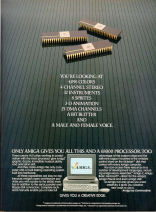 |
| ||||||||||||||||||||||||||
| ||||||||||||||||||||||||||
| ||||||||||||||||||||||||||
 STORY / GAMEPLAY STORY / GAMEPLAYWeird Dreams is literally weird and it's a game like no other of its time. You play the role of a man under a dream-filled comatose state caused by a revenge attack from his girlfriend that turned out to be an alien all along (pretty weird indeed). This game must have been brilliant on paper, to the extent that an entire unnecessary background story was written and was included as a story book to accompany the game, but its poor execution results in a frustrating to play experience and often impossible to enjoy. Its puzzle sector mixes up different genre of games. There are 15 enemies / challenges in total, like a cotton candy stick, a giant wasp, a rosebush with teeth, a lawnmower, a soccer ball with mouth, a little girl with a knife, a jack-in-the-box scary clown, a fat dancing ballerina as well as hopping totem poles, desert creatures, fake doors, bats, a giant roast chicken and a gigantic brain with an eye in the middle plus 7 different death animations. The main character's movement is slowed down by the number of frames that animate his walking and the only move he can perform is to the left or right, across a series of static backgrounds. This is where the game starts to fall apart as the basic handling of the character's actions across the nine -very limited- levels requires extreme patience and immaculate precision to avoid instant death and level reset that results in any contact with an obstacle or a foe. Even when the player knows exactly what to do, Weird Dreams often falls down to luck due to the slow and awkward handling and response. Well, it is surely an interesting game, even if it has lots of negative aspects so someone might give it a try but we believe for not too much long. GRAPHICS / SOUND The PC DOS version supports VGA, EGA, CGA and Tandy graphics hardware. Running in VGA is identical to the Atari ST and Amiga versions, which means that apparently it does not offer full 256-color screen graphics at once. The color palette is exactly the same and thus it has up to 16 simultaneous colors. Clearly an ST port here. The animation is not as smooth as the Amiga version and sometimes it gets frustrating. Running in EGA mode, is also visually pleasant to the eye, but running in CGA, things go south (as only 4 colors are supported) and gameplay gets hard (cannot distinguish easily some objects to avoid etc). The sound is decent though, especially when utilizing an AdLib sound hardware or an IBM Music Feature Card. Quality wise, it's close to the ST version when running on an AdLib, but no sampled sound effects here (Amiga and ST only). | ||||||||||||||||||||||||||
 |
| ||
| ||
| ||||||||
|
|
| ||||||
| ||
PC (ms-dos based)
| ||
| read more... | ||
| The PC (ms-dos based) (default) color palette | ||
 | ||
| CGA: 16-color palette (4 on-screen) | ||
 | ||
| EGA: 64-color palette (16 on-screen) | ||
 | ||
| VGA: 256-color palette (256 on-screen) | ||
| ||
| No comments added yet | ||
| Login to leave your message! |
| Our featured games |
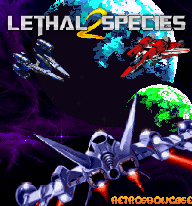 |
| Play old-school now! |
 |
| Music Player! |
 |
| Play ZX on-line!! |
 |
| Play CPC on-line!! |
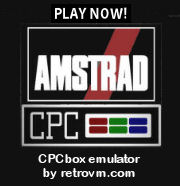 |
| Boot Screens! |
 |
| Retro-games Trivia! |
 |
| Old-school Crossword! |
 |
| Is this my palette? |
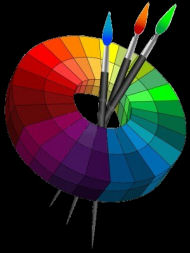 |
| The logo evolution! |
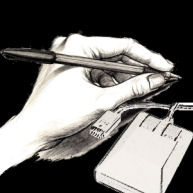 |
| Manuals! |
 |
| Beat them All! |
 |




 7.0
7.0













 CPU: Various processors from Intel,AMD, Cyrix, varying from 4.77Mhz (Intel 8088) to 200Mhz (Pentium MMX) and up to 1995 (available on this site)
CPU: Various processors from Intel,AMD, Cyrix, varying from 4.77Mhz (Intel 8088) to 200Mhz (Pentium MMX) and up to 1995 (available on this site)